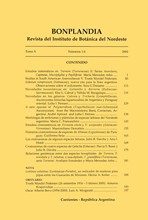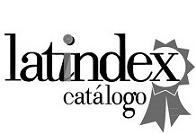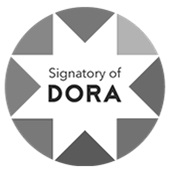EL POLEN DE HELICTERES (STERCULIACEAE) y SU COMPARACIÓN CON GÉNEROS VECINOS
DOI:
https://doi.org/10.30972/bon.111-43945Palabras clave:
pollen, taxonomy, Helicteres, HelictereaeResumen
Pollen grains of 41 species representing all seven sections of Helicteres were studied with light and scanning electron microscopy and described. In order to establish palynological affinities Neoregnellia cubensis, Kleinhovia hospita, Reevesia thyrsoidea, Veeresia clarkii, Ungeria floribunda and Pterospermum acerifolium were also examined. Helicteres is palynologically rather uniform with respect to the shape and size of the grains as well as the type and number of the apertures. The pollen grains are usually triporate, oblate or suboblate, amb triangular and medium sized. Nevertheless the exine surface shows great variability. Nine pollen types are recognized on the basis of the sculpture of the exine: Type 1, tectate-perforate, baculate, in sect. Helicteres; Type 11, tectate-perforate, psilate to weakly verrucate, in 4 species of sect. Orthocarpaea; Type 111, tectate-perforate, with the equatorial zone verrucate and the poles psilate, in sect. Stegogamos; Type IV, microreticulate, verrucate, in sect. Polyandria; Type V, tectate, scabrate, verrucate, in sect. Alicteres; Type VI, tectate-perforate, verrucate, in 2 species of sect. Orthocarpaeaand 4 species of sect. Orthothecium; Type VII, tectate-perforatefossulate, verrucate, the verrucae large, irregular in outline, often anastomosed, in 3 species of sect. Orthothecium; Type VIII, tectate to tectate-perforate-fossulate, perforations and fossulae as well as micro-verrugae and micro-echinae densely concentrated at the poles, the equatorial zone psilate or scabrate, in 3 species of sect. Orthothecium; Type IX, tectateperforate- fossulate, microechinate, the perforations and fossulae densely concentrated at the poles, the micro-echinae distributed throughout the surface but hardly differentiated on the poles, in 16 species of sect. Sacarolha and 5 species of sect. Orthothecium. The pollen types are ordered according to the complexity of the exine; with the types with uniform sculpture considered simpler and the types with polar and equatorial zones differentiated considered complex. Keys to identify the nine pollen types of Helicteres and the pollen types of related genera are presented. According to pollen morphology Neoregnellia is closely connected with Helicteres; this genus shares the same pollen type, IX, with sect. Sacarolha and some species of sect. Orthothecium. The pollens of Kleinhovia and Helicteres have many characters in common (shape, size, apertures), the only difference being the microreticulate surface of the former; they are rather close to each other. Reevesia thyrsoidea, Veeresia clarkii and Ungeria floribunda stand apart from Helicteres in having 3-5 brevi-colp(or)ate and suprareticulate grains. The very distinctive pollen of Pterospermum acerifolium (Iarge size, spheroidal, echinate) supports its segregation from the tribe Helictereae. In Helicteres the different patterns of exine sculpture have taxonomic and phylogenetic value. In the first place, they allow the recognition of the 4 monospecific sections (Helicteres, Stegogamos, Alicteres and Polyandria) and at the same time they reveal the coherence of the genus, since the other 3 sections which have many species (Orthocarpaea, Orthothecium and Sacarolha) are connected with each other not only by exomorphological characters but also by pollen characters. In the second place, they provide bases for interpreting infra-generic relationships and the possible origin of the genus.Two possible evolutionary trends of exine sculpture, which are representated in two diagrams, are proposed. The first possibility starts with the Type VI; from this pollen type the evolutionary trend would have diverged in several directions. On one side, a line would lead toward increasing complexity of the exine that would end in Type VIII. This kind of pollen grain would have given rise to Type IX. On the other side, several divergent lines might have taken place; modifications in the exine sculpture would have led toward a progressive simplicity that would culminate in the absence of sculptural elements of Type 11. From this kind of pollen grain Type I might have evolved. The second possibility starts from Type 11; in this case the evolutionary trend of the exine would have gone in only one direction; the exine would have acquired more and more complexity, giving rise to pollen types connected with each other by transitional forms.
Descargas
Descargas
Publicado
Cómo citar
Número
Sección
Licencia
Declaration of Adhesion to Open Access
- All contents of Bonplandia journal are available online, open to all and for free, before they are printed.
Copyright Notice
- Bonplandia magazine allows authors to retain their copyright without restrictions.
- The journal is under a Creative Commons Attribution 4.0 International license.















.jpg)


